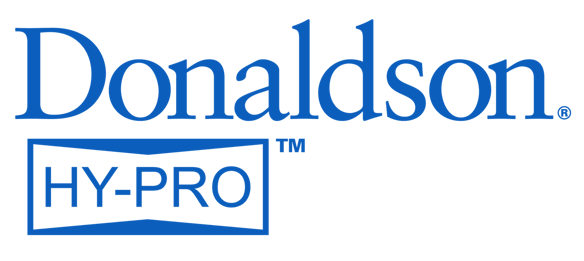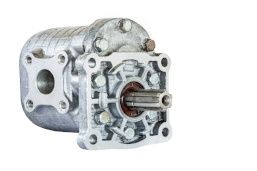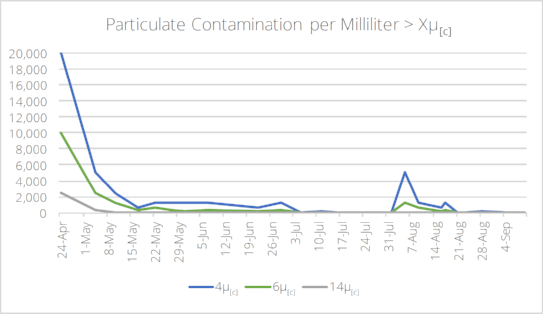The Problem: Hydraulic Pump Failure
Pumps are the heart of hydraulic systems. When the pump fails, the entire system is down until the pump is operational again. This poses a serious threat to any operation relying on hydraulic systems for productivity.
Recently, a hydraulic valve manufacturer was losing 25 pumps a year on their centralized hydraulic system at a cost of $2,440 each -- and that’s only the pump cost. When you account for maintenance resources, lost oil and lost production, each failure costs ~$25,320.
System analysis showed that fluid contamination was out of control with an ISO Fluid Cleanliness Code of 22/21/19. That translates to a minimum of:
- 20,000 particles per ml > 4µ[c]
- 10,000 particles per ml > 6µ[c]
- 2,500 particles per ml > 14µ[c]
The Solution: Modifications, Breathers & Filter Element Upgrades
The manufacturer set an ISO code limit of 17/15/13 and turned to Hy-Pro for help achieving their goal. While surveying their system, we noticed and addressed three factors contributing to their problems.
- The hydraulic tanks were open to the environment. This allows the dirt and dust in the environment to find its way into the fluid. These tanks were sealed to prevent further contamination ingression from the environment.
- The tanks lacked breathers. Hydraulic tanks should be sealed from the environment but there must be a way to allow air exchange to occur between the tank and environment as fluid enters and evacuates the tank. Breathers were added to the tanks to allow this exchange to occur in a controlled manner by removing contamination from the air entering the reservoir before it reaches the fluid.
- A Brand-X 12µ filter element installed in the offline filtration system was upgraded to a 6µ Hy-Pro DFE Rated G8 Dualglass element as more efficient filtration would be necessary to drop the ISO code below the 17/15/13 target.
The Results: 99% Reduction of Particulate Contamination
Fluid analysis samples were taken over the following 140 days to verify the condition of the fluid. The final sample returned an ISO Fluid Cleanliness Code of 12/11/7. That translates to a maximum of;
40 particles per ml > 4µ[c]
20 particles per ml > 6µ[c]
1 particle per ml > 14µ[c]
Pump failures related to fluid contamination (~$633,000 annually) were eliminated through the 99.8% reduction of particulate contamination within the fluid.









